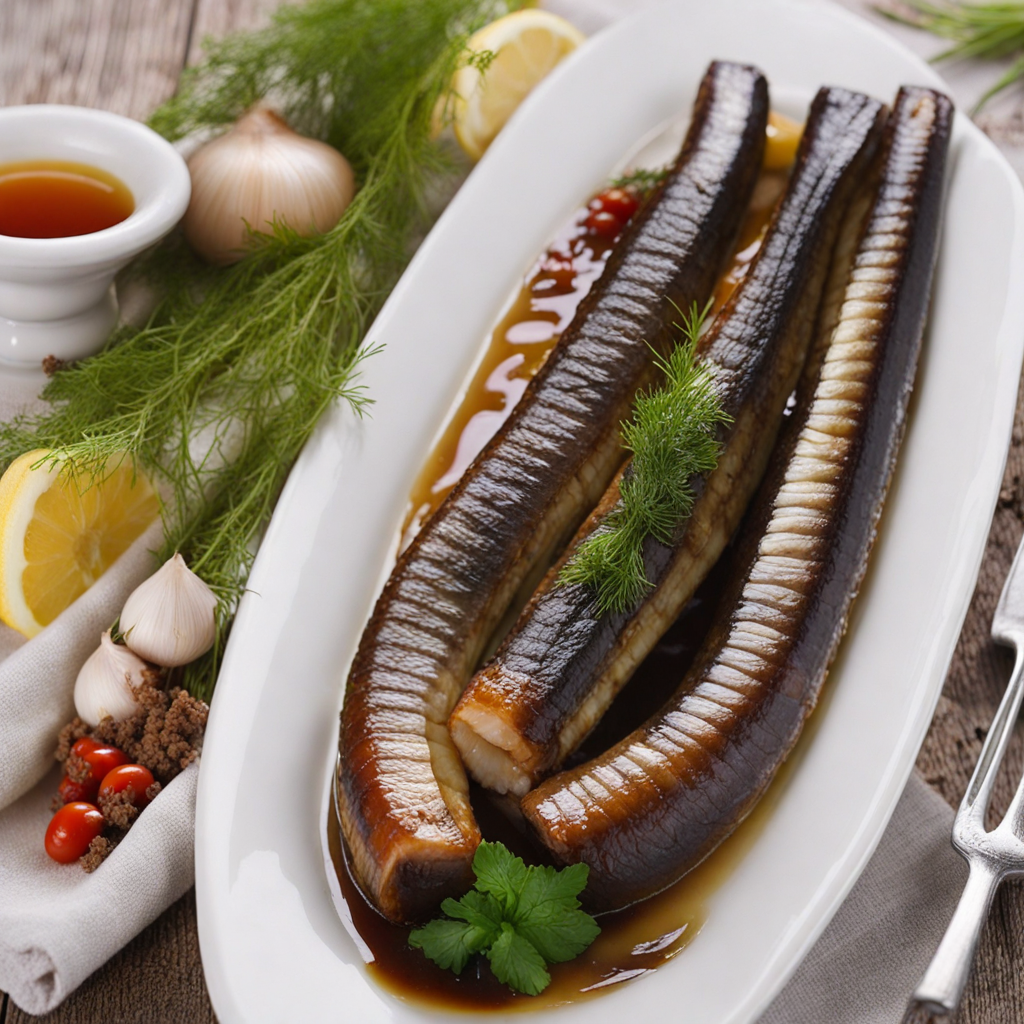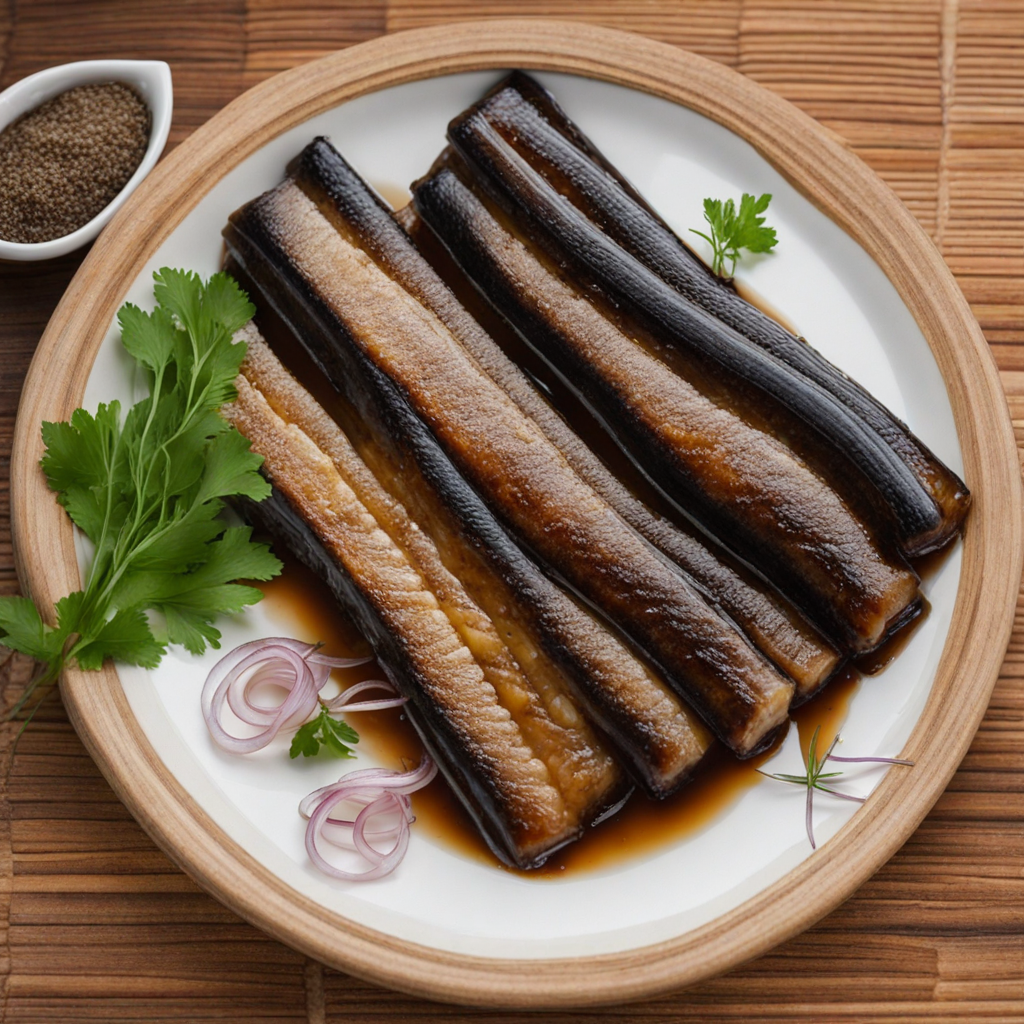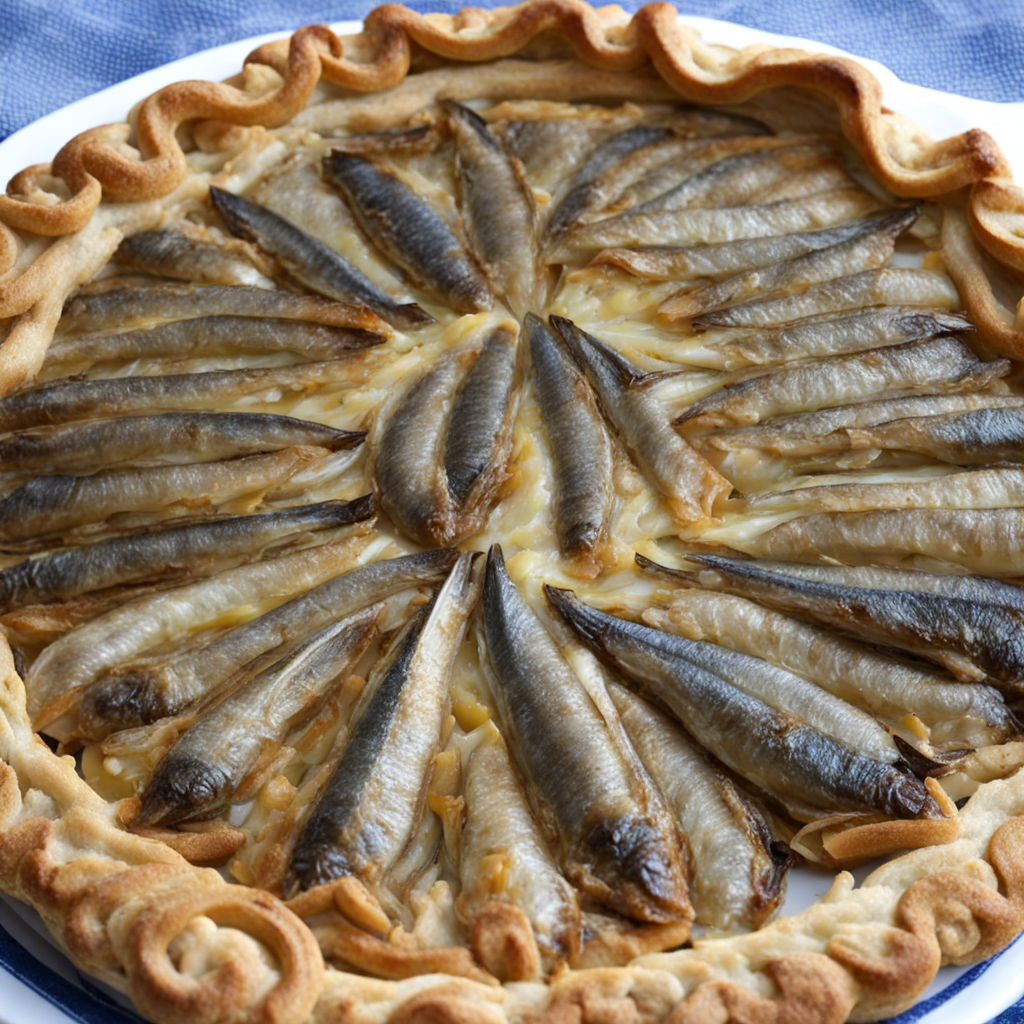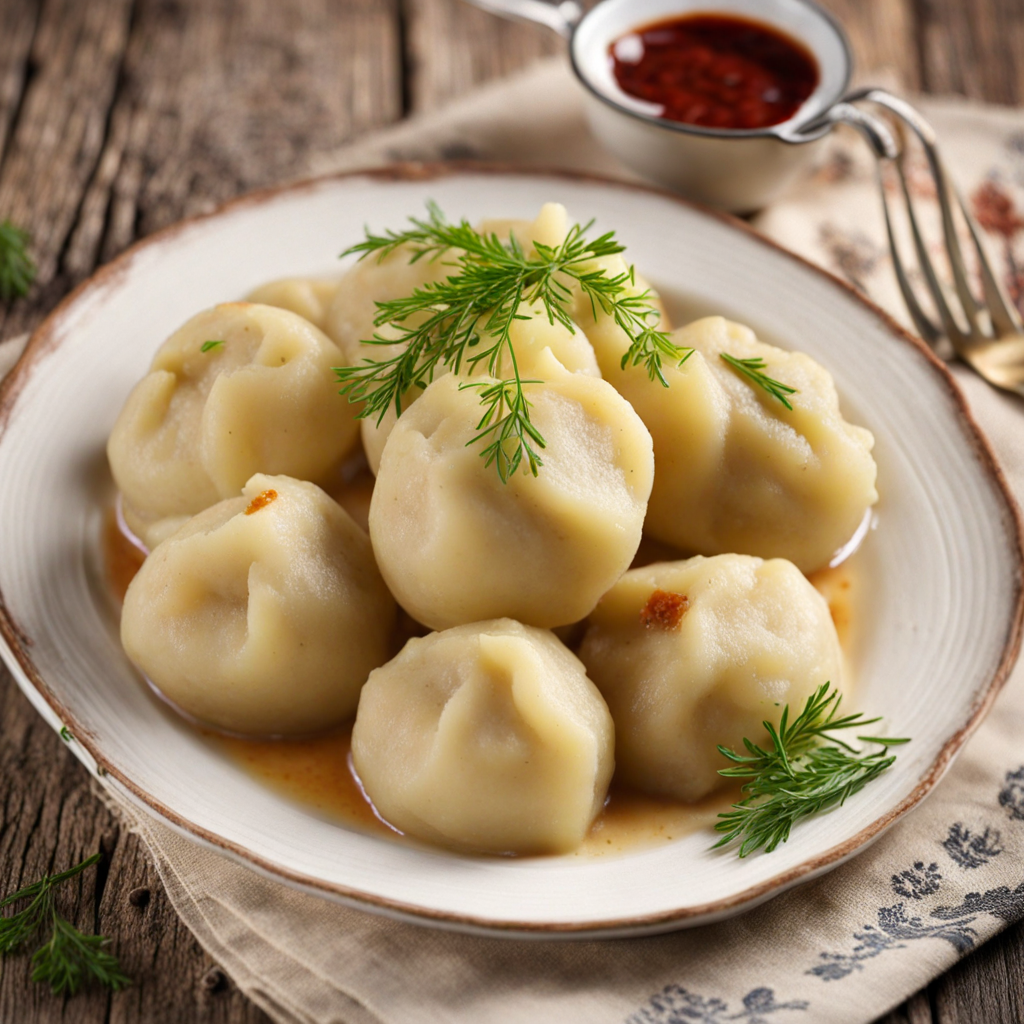Marinated Eel
Marinated eel is a delicacy that beautifully showcases the rich culinary traditions of Estonia. This dish typically features fresh eel, which is cleaned and filleted before being marinated in a mixture of vinegar, sugar, and a blend of herbs and spices. The marinade not only preserves the fish but also infuses it with a unique tangy flavor that sets it apart. The combination of sweet and sour notes complements the natural richness of the eel, making each bite a delightful experience for the palate. In Estonia, marinated eel is often served as an appetizer or part of a traditional smorgasbord, alongside other local specialties. The dish is typically garnished with onions and sometimes served with dark rye bread, which adds a hearty element to the meal. The texture of the eel is tender yet firm, and the marination process enhances its flavor while giving it a shimmering appearance that is visually appealing on the plate. This dish is not just a feast for the senses; it also tells a story of Estonian culture and its close ties to the sea. Marinated eel is enjoyed during festive occasions and family gatherings, symbolizing togetherness and celebration. As you savor this dish, you’ll discover a taste of Estonia’s coastal heritage, where the fresh catch of the day is transformed into a culinary masterpiece that invites you to explore the depths of its flavors.
How It Became This Dish
The History and Cultural Significance of Marineeritud Angerjas in Estonia Introduction Marineeritud angerjas, or marinated eel, is a traditional Estonian dish that embodies the rich culinary heritage of the Baltic region. This delicacy reflects the deep connection between the Estonian people and their natural environment, showcasing the importance of local resources and age-old preservation methods. The history of marineeritud angerjas is a fascinating journey through time, revealing not only the evolution of a beloved dish but also the cultural significance it holds in Estonia’s gastronomic landscape. Origins of Marineeritud Angerjas The culinary use of eel dates back to ancient times, when fishing was a primary means of sustenance for coastal communities. In Estonia, eels inhabit the brackish waters of the Baltic Sea and its rivers, making them a readily available source of protein. The practice of catching eels has been documented as far back as the Middle Ages, when fishing was not just a means of survival but also a communal activity that fostered social bonds among villagers. The preparation of eel, particularly in its marinated form, likely gained popularity during the 19th century. The process of marination was a practical solution to the challenge of preserving fish, especially before the advent of refrigeration. By soaking the eel in a mixture of vinegar, spices, and often sugar, Estonians developed a method that not only extended the shelf life of the fish but also enhanced its flavor. This technique reflects a broader European practice of pickling and preserving fish, showcasing the influence of various culinary traditions that have intermingled throughout history. Cultural Significance Marineeritud angerjas is more than just a dish; it represents a significant aspect of Estonian identity and culinary tradition. Eel has been celebrated in Estonian folklore and literature, often symbolizing strength, adaptability, and the connection between humans and nature. The marinated eel is traditionally served during festive occasions and family gatherings, serving as a reminder of the importance of community and shared experiences. In Estonia, certain dishes are closely linked to specific seasons and celebrations. Marineeritud angerjas often finds its way to the table during Christmas and Midsummer, two of the most important holidays in the Estonian calendar. The dish not only showcases the country's natural bounty but also serves as a bridge between generations, as recipes are passed down through families, each adding their own unique touch. Development Over Time As Estonia underwent significant political and social changes in the 20th century, so too did its culinary landscape. The country’s tumultuous history, marked by occupations and independence, influenced food production and consumption practices. The Soviet occupation in particular brought about changes in the availability of ingredients and culinary techniques. While traditional recipes like marineeritud angerjas remained popular, they began to adapt to the constraints of the time. After regaining independence in 1991, Estonia experienced a culinary renaissance. Chefs and home cooks alike began to explore their food heritage with renewed interest, leading to a revival of traditional dishes. Marineeritud angerjas saw a resurgence as a symbol of national pride and cultural heritage. Modern Estonian chefs began reinterpreting the dish, experimenting with new flavors and presentation styles while still honoring the traditional recipe. In recent years, there has been a renewed focus on sustainability and local sourcing, which has further elevated the status of marineeritud angerjas. As awareness of environmental issues grows, more Estonian chefs are prioritizing the use of locally caught eel and traditional marination techniques. This not only supports local fisheries but also reinforces the cultural significance of the dish as a representation of the Estonian landscape and its resources. Contemporary Appreciation Today, marineeritud angerjas is a staple in many Estonian homes and is featured prominently on the menus of restaurants across the country. It is often served with dark rye bread, boiled potatoes, and a fresh salad, highlighting the dish’s versatility and the importance of local ingredients in Estonian cuisine. The marinated eel is enjoyed not just for its flavor but also for the nostalgia it evokes, connecting contemporary eaters with their heritage. Festivals and food fairs celebrating Estonian culinary traditions often include marineeritud angerjas among their offerings. These events serve as a platform for chefs and home cooks to share their interpretations of the dish, fostering a sense of community and pride in Estonia’s rich food culture. Additionally, food tourism has played a role in bringing international attention to traditional dishes like marineeritud angerjas, as visitors seek authentic culinary experiences that reflect the local culture. Conclusion Marineeritud angerjas is a dish steeped in history, culture, and tradition. From its humble origins as a practical means of preserving fish to its status as a cherished symbol of Estonian identity, the marinated eel encapsulates the spirit of a nation that has weathered challenges while remaining deeply connected to its roots. As Estonia continues to evolve, so too will the interpretations of marineeritud angerjas, ensuring that this beloved dish remains a vital part of the nation’s culinary heritage for generations to come. Through its flavors and traditions, marineeritud angerjas invites both locals and visitors alike to partake in the rich tapestry of Estonian culture, celebrating the enduring bond between food, history, and community.
You may like
Discover local flavors from Estonia







